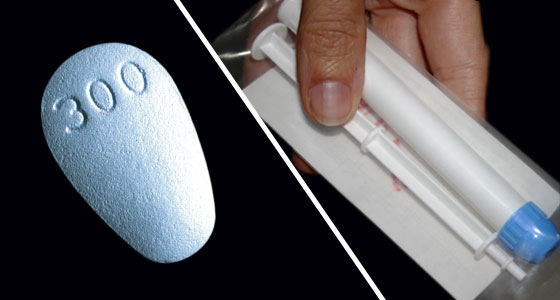Telling a child that they have HIV can be a long and delicate process.
In Epworth, near the Zimbabwean capital, Harare, Médecins Sans
Frontières (MSF) has set up HIV support groups where adolescents can
meet others living a similar reality. Through sharing their stories, and
connecting with one another, their newfound solidarity gradually helps
them to become more self-confident.
Chido is an 11-year-old girl, but she looks much younger. Her big
brown eyes shine bright, and she smiles and laughs aloud as she plays
with the other children. It's hard to imagine what she has been through.
Chido is HIV positive, and because of her status most of her
family-her grandmother, step-father and three step-siblings-shunned her
at home. Yet she didn't know why. Her mother had told her that she had
asthma, which is why she was sick and had to take the tablets, so she
couldn't understand why her family ignored and avoided her. And because
she didn't feel sick, she stopped taking her tablets regularly.
"Living with HIV can be confusing and difficult for young children,
and is often particularly tough for those orphaned by HIV who are also
HIV positive. They can be badly treated at home, encounter increased
stigma and feel extremely isolated. Many of them never tell anyone what
is happening to them and suffer in silence," says Ann Sellberg, a
medical doctor working with Médecins Sans Frontières in Epworth.
As Chido continued to grow, her adherence to the life-saving
antiretrovirals deteriorated to the point that the doctors referred her
to MSF's HIV support group. Only then did she finally learn about her
status.
"Finding out about HIV was a great relief for Chido, but also for her
mother, who hadn't felt able to tell her daughter what she really had,"
explains Ann. "Now that she better understands the disease she has, she
is doing a lot better emotionally, plus also adhering better to her
medication plan."
Disclosure is always a delicate thing. Parents are often afraid to
tell their children because they fear the consequences of stigma.
Mothers who have passed the virus to their unborn children can feel very
guilty. But there are additional issues according to Joseph Alick, a
Médecins Sans Frontières mental health officer.
"Sometimes women themselves don't know their own status until their
first pregnancy. Pregnant women often don't show symptoms so they get a
terrible shock when they discover that they are HIV positive," he says.
After a positive test for HIV, a pregnant woman is immediately
started on antiretroviral therapy (ART).
"However, it is difficult for a
newly diagnosed woman to go home and tell her husband about her status,
because of the blame game," Joseph says, pointing out that the
Zimbabwean society is very patriarchal. "Many people still think that
being HIV positive is a sign for sleeping around, and that the woman is
guilty."
According to the World Health Organization, Zimbabwe remains one of
the countries that is most affected by HIV/AIDS, with nearly 15 per cent
of the adult population infected by the virus. Zimbabwean Ministry of
Health and Child Welfare estimates that ART coverage had reached almost
80 per cent in 2013, whereas the rate of access treatment for
adolescents was only half.
"At school, children learn that HIV is passed from one person to
another by sexual intercourse, so when they find out that they are
positive they are shocked and confused," Alick says, explaining that it
is often the HIV counsellors who inform the children about transmission
from mother to child.
Teenagers frequently refuse medication because they fear disclosing
their condition or that others will expose them, worried about the lack
of guarantee that their condition won't become known. Though there is no
guarantee, the counselling teams encourage the children to undertake
responsible disclosure, and not to be ashamed of their status.
But the HIV support group in Epworth is about more than counselling.
It becomes a safe haven where they are all treated equally, where they
can play, sing, dance and just be themselves without fear of stigma.
Chido has a role in a theatre play about sexual abuse. She looks
confident, she looks happy. "At home things are better now," she says.
It makes a great difference that she can now exchange frankly with her
mother about her disease. Ann adds "It's rewarding to see how strong
they become together-not forgetting how much fun they have!"
In 2014, a total of 165 HIV positive patients aged under 20 years
received ART through MSF's project in Epworth. Eight percent of these
patients were under 15 years of age. This year, MSF will continue to
advocate for increased access to HIV testing and treatment for children
and adolescents.
SOURCE




